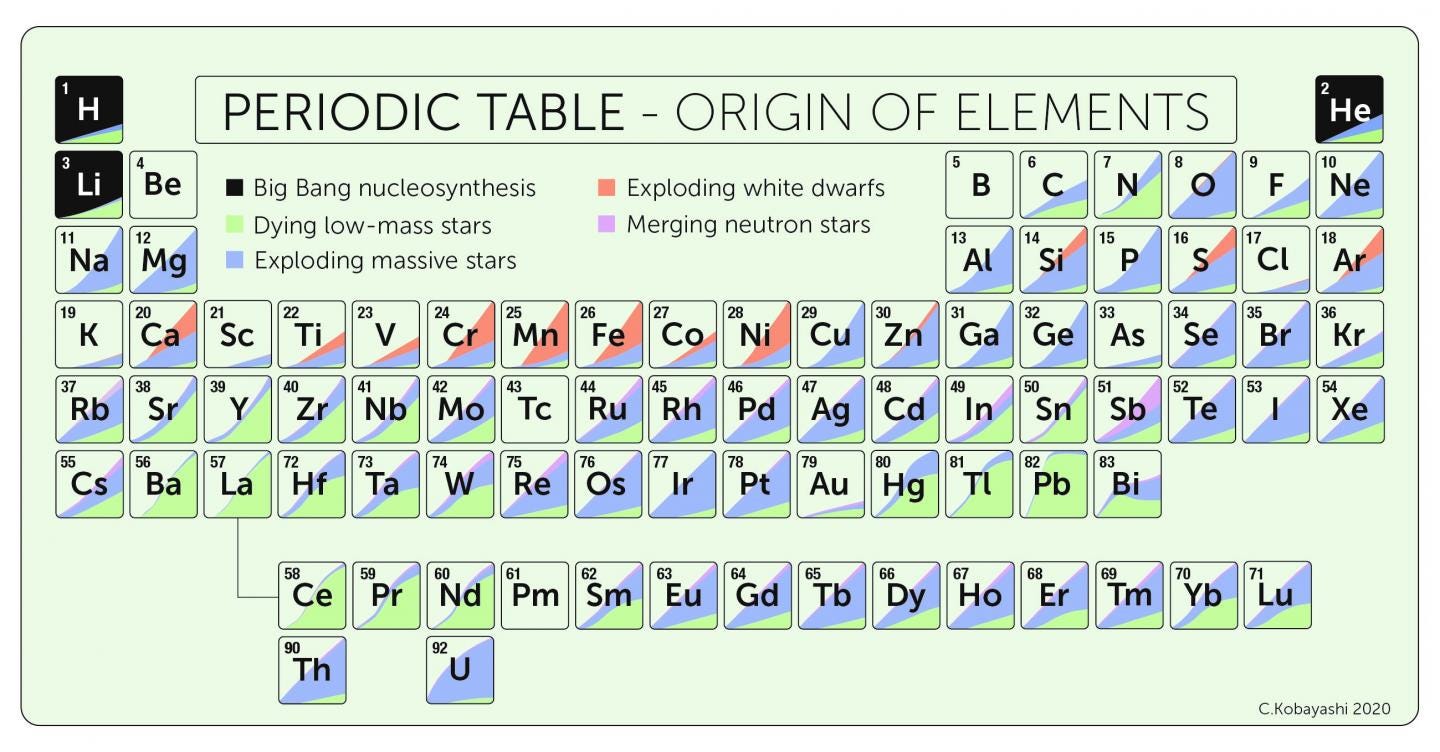Runnin’ on empty
When atoms first formed after the Big Bang, only hydrogen and helium (together with a smattering of lithium) were produced. Everything else was forged in the nuclear furnaces of massive stars, or in the titanic explosions of stellar supernovae.
Stars like the Sun spend most of their lives balanced between gravitational forces pulling the body inward and the outward push of thermonuclear reactions at its core.
In a little over four billion years, our Sun will run out of available hydrogen and will shrink. Increased pressures at the core of the Sun will result in helium fusing for the first time, and our parent star will expand into a red giant, swallowing Mercury, Venus, and (possibly) Earth.
Stars significantly larger than the Sun can go through several of these cycles, each producing heavier and heavier elements. When iron (number 26 on the periodic table) is produced, any further fusion requires more energy to produce than is gained from the reaction, and thermonuclear reactions at the core fail, losing their battle against gravity, and the star collapses.
Massive stars can erupt into a powerful supernova, producing elements heavier than iron — including zinc, tin, and gold. When they settle, these events can leave behind a black hole or an ultra-dense neutron star.
Stars with masses less than eight times greater than the Sun were found to produce roughly half the elements lighter than iron, including carbon, nitrogen, and fluorine. More massive stars form the majority of the oxygen and calcium in the Universe, both of which are essential to life.
But, these supernova eruptions could not account for the amount of gold in the Universe, and astronomers believed collisions of neutron stars might fill the gap. This new study shows that even these events do not produce enough gold to explain the concentrations of gold we see around the Cosmos.
“The Universe didn’t make them fast enough to account for their presence in very ancient stars, and, overall, there are simply not enough collisions going on to account for the abundance of these elements around today,” Karakas explains.

